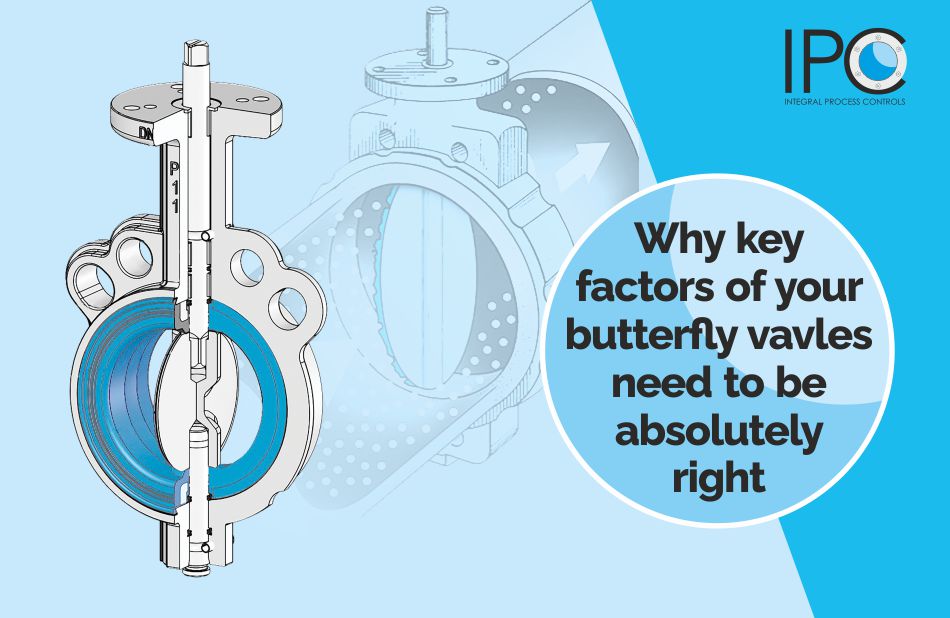1. Understanding the Butterfly Valve
A Butterfly Valve is a flow regulating disc Valve, these valve consists of a circular disc or plate built with a stem through the middle or attached offset. When opened, the disc pivots 90° in the valve bore, aligning with the flow, creating a flow path.
Biggest advantage that the Butterfly Valves offer is they are extremely easy to install, light in weight and relatively compact in size and structure. This compact design also usually makes the initial cost for these Valves relatively lower as compared to other valve designs.
These valves are vital in many industries and especially for water supply and distribution. In this article, we will delve deep into the world of butterfly valves, exploring their construction, working principle, actuation methods, advantages, and their specific application in water supply systems.
2. Decoding the Butterfly Valve
These valve can be distinguished by its simple yet effective design. As part of the quarter-turn valve family, it functions to regulate or completely shut off the flow of a fluid in a pipeline. While valves are often highlighted for their flow control capability, it’s crucial to use them primarily for complete shut-off or full flow applications. This prevents potential damage to the valve disc and maintains optimal sealing properties.
These are widely used in many industries, especially in water systems and pumping stations. They’re popular because they’re simple, compact, affordable and quick to operate.
Understanding Butterfly Valve Components
- Valve Body: The valve body, which fits between the pipe flanges, forms the outermost part of butterfly valves.
- Disc: This is the principal component that regulates fluid flow. The disc is comparable to a gate in a gate valve or a ball in a ball valve.
- Seat: The seat lines the internal valve body and secures the disc in the closed position to achieve complete shutoff.
- Stem: The stem, or the shaft of the valve, connects the disc to the actuation mechanism and transmits the torque through itself.
- Seals: Seals ensure a tight seal during operation and isolate the process media from the valve’s internal components.
3. Exploring Butterfly Valve Operation
The operation of a this valve is relatively straightforward. The valve disc’s rotation controls the fluid flow. When the disc is in the closed position, it blocks the valve bore, and when in the open position, it allows flow by orienting itself perpendicular to the flow direction.
4. Butterfly Valves Actuation Mechanisms
These valves can be actuated or operated in several ways – manual, semi-manual or fully automatic:
- Electric Actuation: This method uses an electric actuator to control the valve with a 4-20mA control signal, ideal for high precision regulation and time-sensitive applications.
- Pneumatic Actuation: We use compressed air for actuation in this method, which also suits high-precision applications.
- Manual Actuation: This method makes use of a handwheel, crank, or lever to operate the valve.
5. Use of Butterfly Valves
These valves are used in various industries for regulating the flow of fluids or gasses within pipelines. Their simple design and quick operation make them perfect for applications requiring fast shut-off or control. This valve rotate a disc to control flow, ensuring low pressure drop and dependable performance. We use them for flow control and reliable shut-off in water treatment, HVAC, chemicals, and various industries.
6. Advantages of Butterfly Valves
- Lightweight and Compact: Their compact design and smaller face-to-face dimension translate to a smaller installation footprint and lower installation costs.
- Low Maintenance Requirements: Their simple design with fewer moving parts reduces their maintenance requirements.
- Fast Acting: A 90° rotation of the handle provides a complete closure or opening of the valve.
- Low Cost: Their simple design often makes butterfly valves a more economical choice compared to other valve types.
- Versatility: You can install Butterfly valves in a wide variety of scenarios, including underground installations.
7. Types of butterfly valve
These Valves can be typically grouped into three basic types:
- Damper
- Centric Design
- Offset Design
Centric Design Butterfly Valve
These valves are commonly called as centric or Resilient-seated Butterfly valves. In these valves, the stem centers in the middle of the valve disc, and the disc centers in the pipe bore. A rubber (resilient) seat makes tight contact with the seal, achieving efficient sealing, which makes them ideal for high-pressure applications.
Offset Design Butterfly Valves
High-performance Butterfly Valves are a popular choice for industrial and commercial use. They’re designed to withstand high temperatures and pressures. In these valves, the shaft doesn’t pass through the seat but through the centerline of the disc. They need pipe flange gaskets when installed between pipe flanges.
Double offset Butterfly Valve
As the name suggests, the double-offset high-performance Butterfly Valves have a disc with two offsets. We position the disc in the center of the pipe bore to enhance sealing ability and reduce wear on the valve. Double offset Butterfly Valves are ideal for systems requiring higher pressure resistance.
Triple offset Butterfly Valves
The triple offset Valve performs reliably in difficult services under harsh conditions. In these Valves, The stem is located behind the disc and offset to one side giving a double-offset to the valve.
IPC is a leading manufacturer of Butterfly Valves. Our valves are durable, light weight and come with increased strength. Proven for their performance, IPC butterfly valves are first choice for industrial and commercial applications.
8. IPC High Performance Valves
IPC High performance Butterfly Valves are best suited to handling water, oil, steam and gas. These valves offer corrosion resistance, cost effectiveness, and lightweight construction, making them an ideal choice for various applications.
Conclusion
Butterfly valves are indeed an indispensable component in various industries, especially in water supply systems. IPC is a leading manufacturer, supplier and exporter of GGC valve, Ball Valves and Butterfly valves. With our unique design, operational efficiency and multitude of advantages, we offer a reliable and cost-effective solution for regulating fluid flow.

